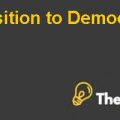
Investment Banking at Thomas Weisel Partners Case Solution
Introduction and History of Thomas Weisel Partners
TWP (Thomas Weisel Partners Group Inc.) is also known as Weisel. The company is US-based investment banking firm headquartered in San Francisco, California. The company started its business and formed by Thomas Weisel and other personnel from the former Montgomery Securities in 1999. Montgomery Securities were acquired by the national bank at $1.3 billion. Moreover, National Bank also acquired Bank of America Corporation which already acquired its related technology competitor Robertson Stephens.
The core business of TWP is investment banking and particularly in this field TWP heavily focused on underwriting, Mergers and Acquisitions and Equity financing services. However, the company avoids to give good debt to its customers and invest in their capital for a different spread. The company’s primary area of attention is the industrial sector, however, with the passage of time the company started to invest and to give services to the health care industry. Since the company faced a downfall in the technology sector. The company, later on, decided to give its services to medium and small sized enterprises that were traveling a fast track of growth and high profitability.
Furthermore, the segment which is the company’s central area, was neglected by many of the industry key player and the company decided to serve this area to increase the volume of services and to increase its overall margins. The reason for selecting the most neglected area was that the company had fierce competition in the technology sector since, there were huge investment banks which were serving the arena and dominating the industry these giants were Goldman Sachs, JLL, etc.
The company primarily started its business with former executives of Montgomery Securities in 1998. When Weisel decided to form TWP with an initial capital of $30 million. However, the company raised an additional capital of $35 million from investors for a stake of 7% of the enterprise. The company firstly started its business in the Technology and telecommunication sector and positioned itself as a research-driven merchant bank. Weisel believed that this segment will be the most appropriate segment for the company and TWP could easily serve these businesses to earn acceptable returns.
Within two years of initial operations the company had over 800 employees which were working under the company’s core business i.e. investment banking, institutional brokerage, private equity investing and private clients services. In 1999 and 2000, the company served almost 163 equity offerings, advice 63 mergers, and acquisitions across its offices spread over San Francisco, New York, and Boston. The company’s revenue was peaked at $486 million in 2000, and it had raised $43 billion of equity offerings.
The California State government pension fund bought 10% stake of the company for $100 million and also promised to raise $1 billion in the firm’s private equity. On the other hand, Japanese Bank Nomura Holding Inc. also invested $75 million in the business as a direct investment. However, this move was the part of company’s strategic plan to encourage cross-border investments.
Revision of the Business Model and Strategic approach
It has been discussed earlier that the company initially started to give its valuable services by serving small and medium sized businesses that are new to the market but having a healthy pace of growth and profitability. The idea and the strategy were fair enough to compete in the investment banking industry. On the other hand, the technological sector was traveling through a bubble of growth and when the bubble busted the growth and efficiency of TWP started to decline. Therefore, the company decided to enter in new and competitive segments to diversify its risk and to manage its portfolio efficiently....................
This is just a sample partial case solution. Please place the order on the website to order your own originally done case solution.












